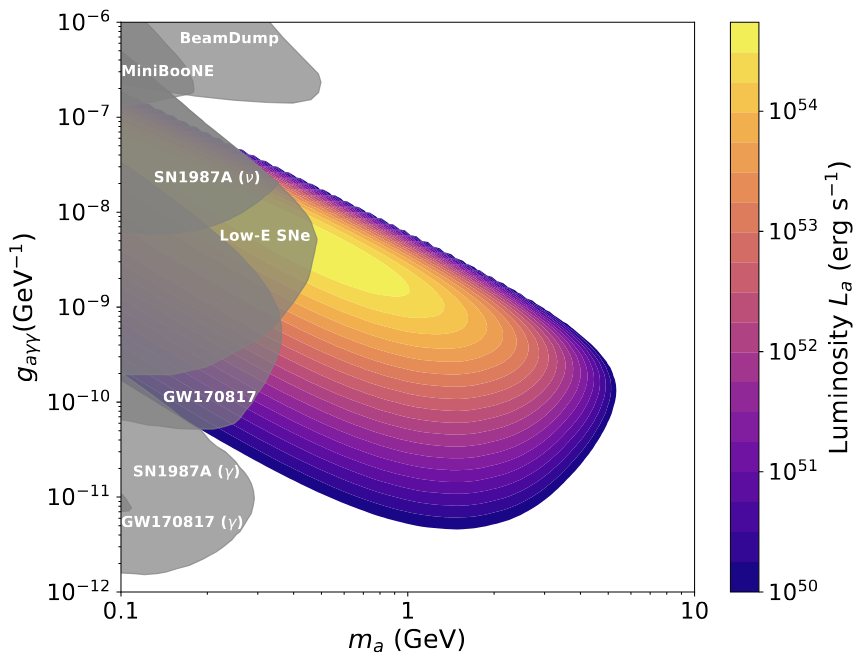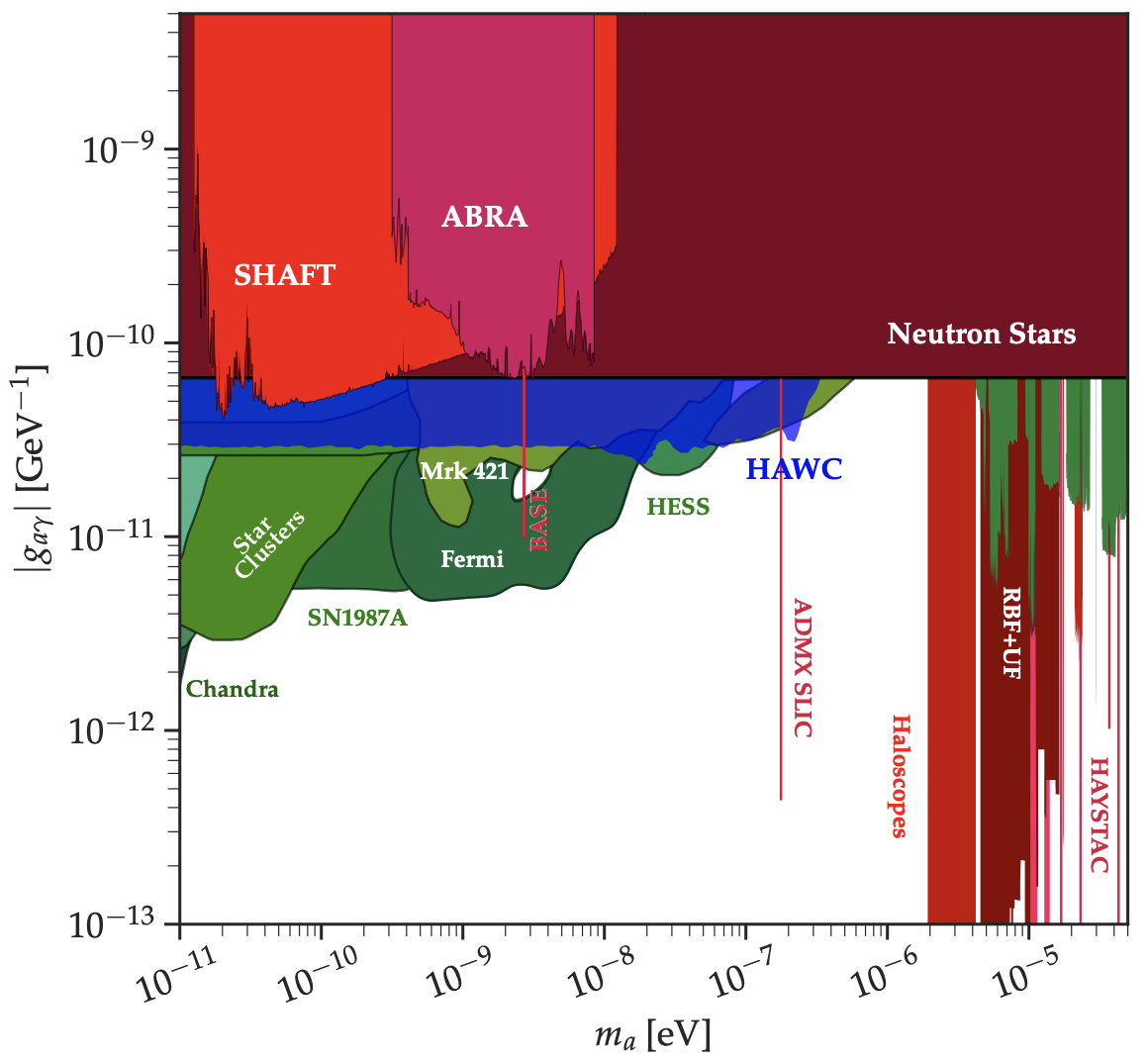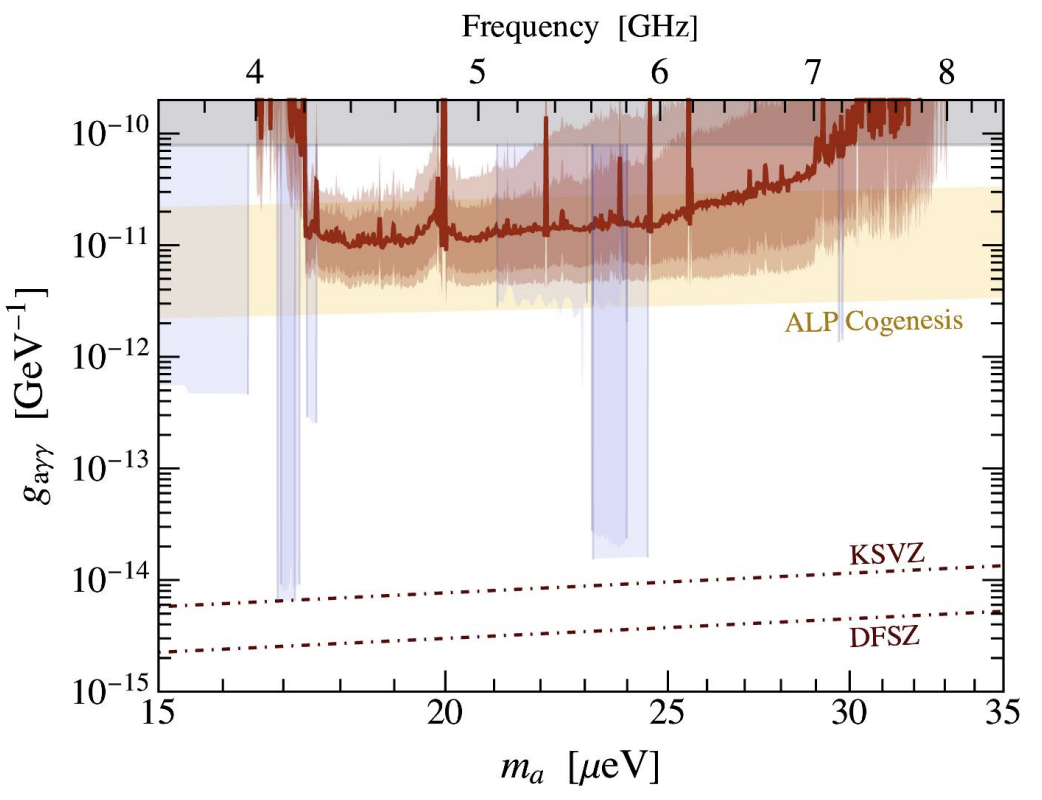
GRB Observations Strongly Constrain Heavy Axions
Heavy Axions can be very efficiently produced in extremely high temperature plasmas. One of the highest temperature plasmas in the universe is produced in the very early stages of GRB fireballs. These fireballs can form on distance scales of less than 10 km, and achieve temperatures as high as 100 MeV. Once produced, these axions can free-stream outside of the GRB acceleration region, and decay back to photons farther from the main GRB jet. This prevents them from being accelerated up to high energies, and disrupts the production of the high-energy beam that typifies blazar jets. Using observations that high-energy jets have been observed from many GRBs, we strongly constrain the axion parameter space, producing world leading limits on axions with GeV-scale masses.
Read MoreResearch Topics
- Highlights and Overview
- Dark Matter(79)
- Galactic Center Excess(20)
- Celestial Body Searches(21)
- Gamma-Ray Searches(19)
- Multiwavelength(8)
- Cosmic-Rays Searches(12)
- Dark Matter Models(21)
- Axion Dark Matter(3)
- Astrophysics(77)
- TeV Halos(19)
- Gamma-Ray Astronomy(32)
- Cosmic-Ray Astronomy(14)
- Radio Astronomy(5)
- Neutrino Astronomy(6)
- Solar Physics(7)
- X-Ray Binaries(7)

